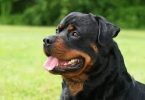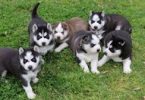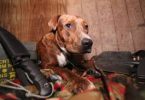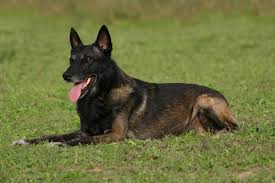
The Belgian Malinois roots begin in Belgium during the 1800’s. They were used as all purpose service dogs, mainly to guard livestock. They were strictly working dogs that were bred for ability over appearance. Today, this breed is gaining in popularity in the United States in the field of law enforcement, herding, obedience, tracking and search and rescue. One of the reasons is the Malinois is constantly ready for action, and has a seemingly endless supply of high energy. They enjoy an active lifestyle, spending plenty of time outdoors in the fresh air and sunshine. This is one breed that is not meant to sit inside a small apartment or house all day. They need to have vigorous play sessions in the yard and expended energy through sprints or fast paced jogs with their owner. They especially enjoy herding when given the chance. This breed needs daily access to a safe, fenced in yard and is best suited to sleep indoors with the rest of the family pack. They have tolerance to moderately cool and warm temperatures.
If well bred, this breed is relatively free of physical problems, with the exception of occasional bouts with epilepsy, elbow dysplasia and CHD. Rarely seen are cataracts, PRA, hemangiosarcoma and pannus. Belgians should be checked for eye, hip and elbow problems.

This breed can be of use for many more years than any other breed, as the Malinois is relatively free of hip dysplasia and CVI. Cervical Vertebral Instability, or “wobblers” which generally occurs in older males and is caused by pinched nerves in the rear end of the dog. This is usually due to genetics making the dog unsuitable for breeding. The average lifespan of the Belgian Malinois is between 10 and 12 years.

Temperament: The Belgian Malinois should reflect the qualities of intelligence, courage, alertness, and devotion to master. Malinois should be watchful, attentive, and always observant and diligent with strangers, but not apprehensive. They should not show fear or shyness, nor show viciousness by unwarranted or unprovoked attacks. With those they know well, they are affectionate, friendly, zealous of their attention and very possessive. Powerful and agile, the Mal can out muscle most people, so handlers need to establish control by giving strong, clear messages and commands. Their physical appearance is muscular, yet elegant, with the overall impression of lean power and an inquisitive expression on their face.
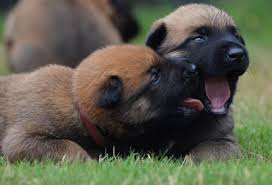
Malinois have a high degree of trainability, stamina and dedication to their jobs. Because of their herding instinct, Malinois are very keen to movement, therefore, to body language. Any move you make, they will pick up on. This is very important for puppies, since they regard the owner as the pack leader. Some of the puppies go through a growth period during which they may show either fear, shyness or aggressiveness. Ignoring the undesirable behavior and rewarding the good behavior will give the puppy confidence. Malinois are handler oriented, but some can also be handler sensitive, which is what makes them so easy to train, as they are so willing to please. Mals will follow directions, but they will use their talented senses as well. But beware, the heavy handed owner can very easily ruin such a dog, while the one who trains with motivation can have a wonder dog! They are good with children if raised with them and they accept other animals if they can be the alpha dog. This breed is not for inexperienced dog owners.
Appearance: The Malinois body is medium to large in size. Females weigh in at approximately 50 to 60 pounds while males weigh in at about 55 to 75 pounds. Their coloring is fawn to mahogany with a black mask on the face, black ears with black tips on the hairs. Both their eyes and nose are dark in color. Their ears sit high on their head and are alert at all times. Their double coat is short and thick. Their undercoat is dense and their topcoat is thick which protects them in adverse weather conditions. The Malinois body is muscular and sturdy but they are surprisingly light on their feet and quite agile. Their chest is broad and deep and their legs are long. They are as long as they are tall.
Grooming-Like the German Shepherd dog, Malinois can be heavy shedders, however require minimal grooming such as occasional bathing and nail trims. Belgians are a snap to groom, as their short coats do not require trimming or stripping. They shed heavily year-round, so weekly brushing is a must. They will shed profusely at the change of seasons, so Spring and Fall may require daily brushing. They only need to be bathed as-needed, when they get extra dirty or start emitting a doggy odor. Active Belgians can wear down their toenails naturally, making nail trimmings unnecessary, but if the dog’s nails click on hard floors, they are too long. Regular teeth cleaning and ear cleaning can keep harmful bacteria from growing, and help keep the dog healthy.
The Belgian Malinois is my number one pick for personal protection and prepper dog ability!

